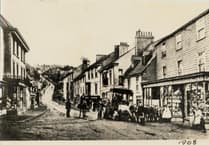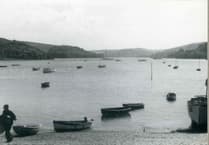THE mysteries of Dartmouth Castle are being brought to life in a new interpretation project by English Heritage.
Imaginative new panels, sound and video installations, and a 3D model of the castle complex have been introduced at the historic site.
Dartmouth Castle defended the harbour town for over 550 years – from the ‘first castle’ of 1388 to its last call to action in the Second World War.
One highlight of the project is a specially-commissioned video exploring the use of Dartmouth’s harbour chain. A feat of medieval engineering, the massive iron chain spanned the 250m opening of the Dart estuary from Godmerock on the eastern bank to Dartmouth Castle on the western. The chain, which was probably first installed in the 1480s, could be raised up through the water to stop enemy ships in mid-river – making them an easy target for gunfire. The gun tower contained a winding mechanism for lifting and lowering the chain, which continued to defend the estuary when required, for another 200 years.
Until now little has been known about the workings of Dartmouth’s unusual defence system. Ahead of the project, English Heritage commissioned an expert in historical engineering to help model how the chain might have worked. Given the ever changing tides and forces acting on the chain, it would have been too heavy to have been raised by a winding mechanism alone.
English Heritage now believes that boats, mentioned in documents of the time, were spaced evenly across the river to help lift the chain and maintain its tension, ensuring ships could not pass. The new video, projected in the gun tower, uses animation to bring the working of the chain to life.
Paul Pattison, senior historian at English Heritage, said: ‘Dartmouth is a unique castle. Today, it enjoys a peaceful, picturesque setting at the mouth of the River Dart but for centuries it was a key part of the defences of the town, helping to keep would-be attackers away from the prosperous port.
‘While it has long been known that the castle is the earliest known purpose-made coastal gun fort in England, the story of how a great iron chain, stretched across the river, worked with the guns to stop enemy warships has been somewhat neglected.
‘Research into this intriguing innovation has given us a fresh understanding of how it may have worked – and it is fascinating to imagine what must have been a large-scale operation to work the chain.’
In the Guard Room, a Victorian-inspired moving automaton sets the scene. A turn of the handle brings the model to life, showing in sequence when the surviving parts of the castle were made.
A dramatic audio and light installation in the 19th-century gun battery gives a sense of the action as a crew prepare to fire one of the big guns. Displays in the 15th-century gun tower explore the weaponry and armour used to defend the castle. Visitors can try helmets on for size, get hands-on with the cannon balls and shot fired from the castle’s guns and discover the changing technology used to protect Dartmouth through the centuries.
Throughout the castle, a series of new panels now guide visitors through the complex of rooms and buildings. As well as retelling Dartmouth’s rich history, visitors will also be introduced to castle characters such as John Hawley – the pioneering mayor of Dartmouth, merchant and warrior who may have inspired Chaucer’s Shipman in the Canterbury Tales.





Comments
This article has no comments yet. Be the first to leave a comment.